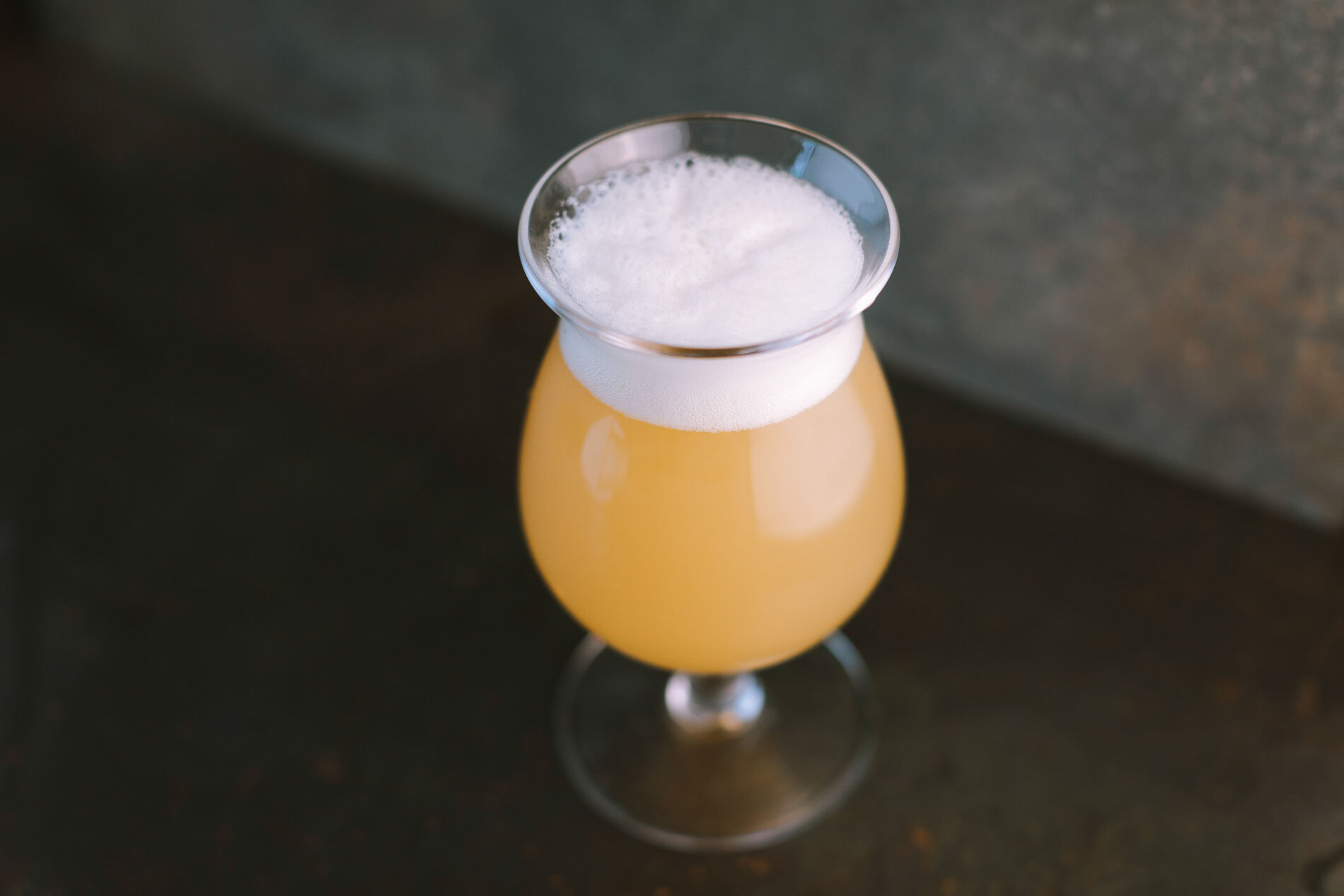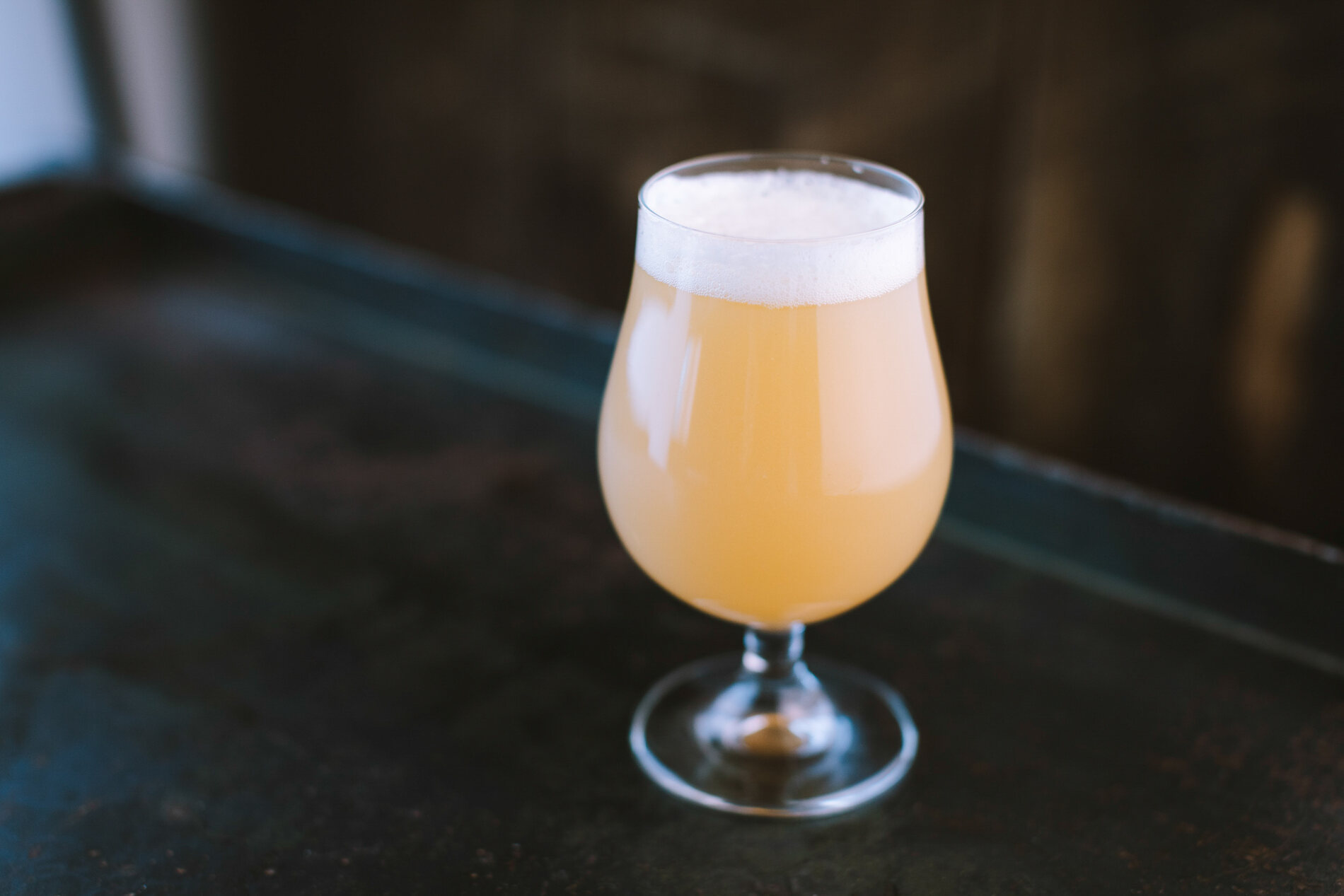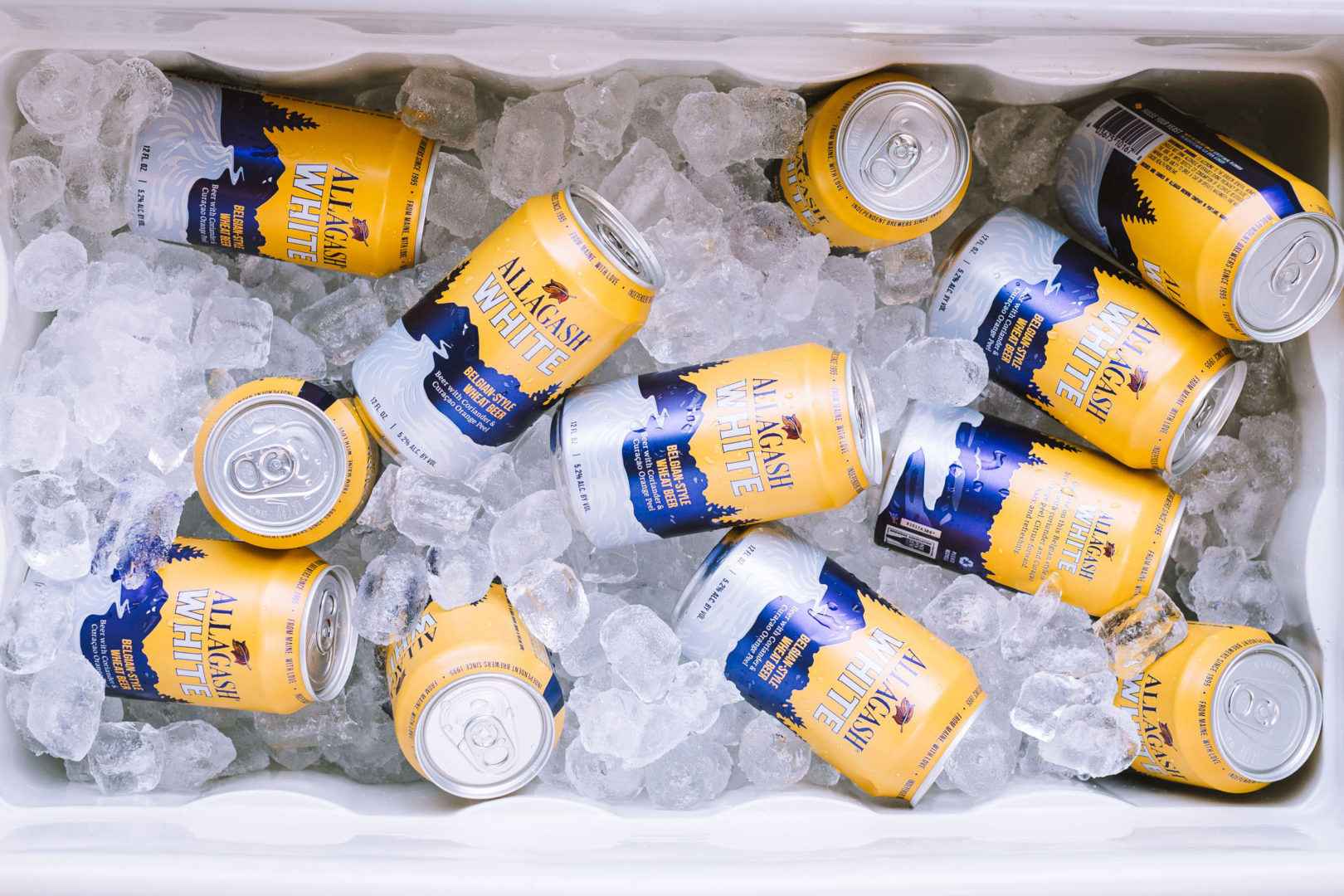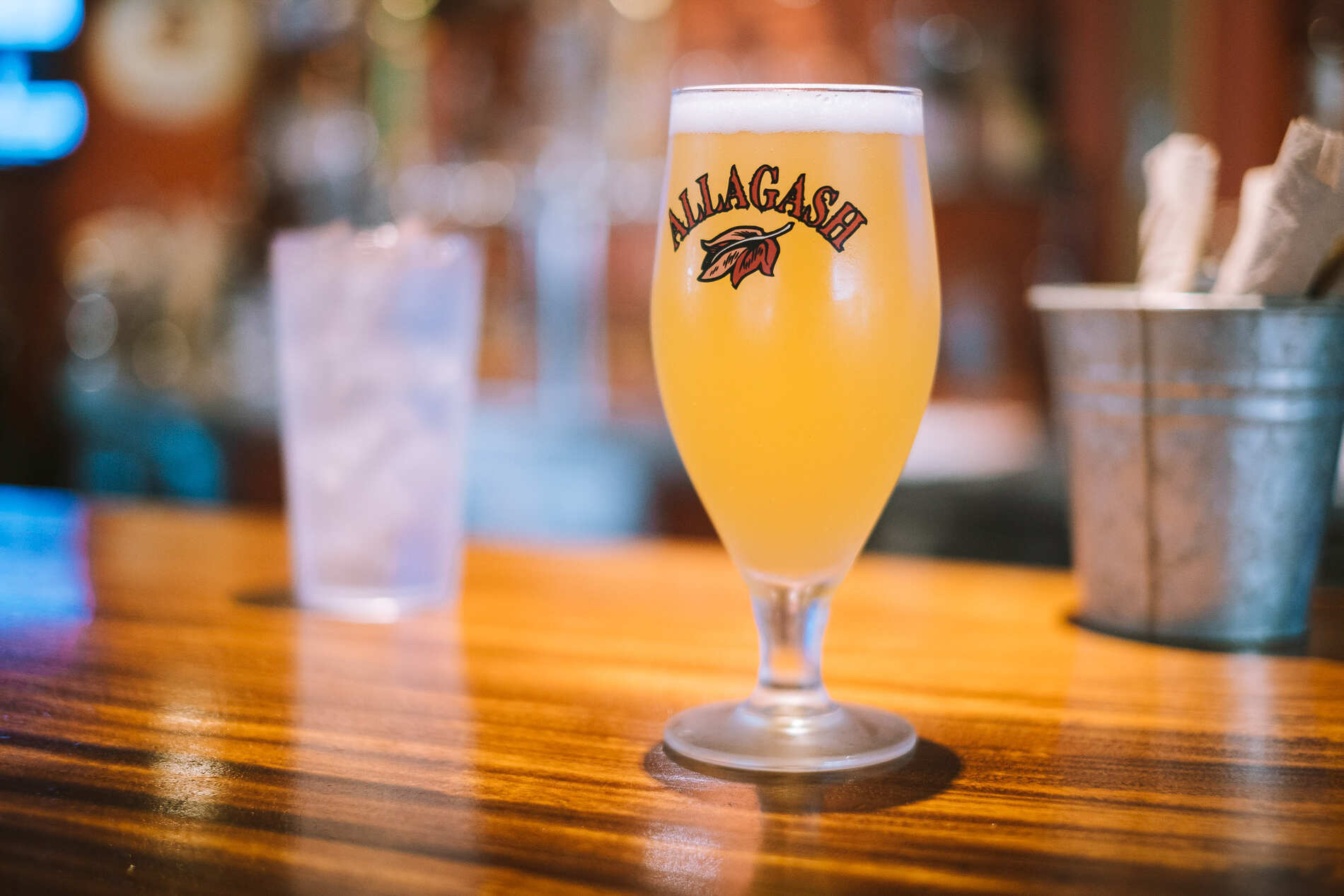The haze days are upon us. At this point in time, hazy beers are widely sought by craft beer fans new and old. So we wanted to take some time to unpack what haze really is, and what its purpose in beer is. Is it intentional? A mistake? We’ll explain all that and more below.
What is the haze made of?
In brewing terms, haze is called turbidity, a much less appetizing term. Haze in beer consists of “insoluble material.” That’s intentionally non-specific, because a beer can get its haze for a variety of reasons. So let’s look at a specific beer: Allagash White.
The haze in Allagash White comes mostly from proteins and polyphenols in the grain. The proteins and phenols combine to form something called colloidal haze. Without diving completely down the rabbit hole, colloidal haze forms when two substances bond, resulting in molecules large enough (but not too large) to be suspended within the beer, causing turbidity. Proteins are really the key to a stable haze. The molecules need to be large enough to be visible (thus causing haze), but not so big that they drop out of solution, making the beer clear again.

Where yeast comes in
A second, but definitely less important contributor to haze is yeast. Two factors here. One concerns flocculation, a word that has nothing to do with the migration of birds. When a yeast is near the end of fermentation, it will want to bond with other yeast cells and either float to the top or bottom of the beer. The higher the “flocculative tendency,” the more yeast will want to clump and drop out of solution, making for a clearer beer. Allagash White uses a mid-to-low flocculating yeast, so more yeast stays in solution. Thus, more haze. The rub: yeast is made up of relatively large particles that want to drop to the bottom of the vessel. So you can’t just depend on yeast to keep your beer hazy.
Adding to this yeast-derived haze is the second factor: we bottle condition our beer. Bottle conditioning involves adding some extra yeast and sugar to the beer directly before packaging. This brings the beer up to its full carbonation inside the package, adds a bit more flavor, and scrubs the teensy amount of oxygen inside the bottle, helping the beer maintain its freshness longer.
In other styles of beer, like a New England IPA, a colloidal haze can be largely the result of dry hopping: a method of adding hops during fermentation. Polyphenols from the hops combine with protein in the beer and form a haze. Note: this only happens when very large quantities of hops are used in dry hopping, which is par for the course in plenty of craft beers out on the market today.
Another haze you may encounter is chill haze. This is actually another colloidal haze, but it only appears at certain temperatures. Chill haze usually develops around 32°F when proteins come out of solution. So you might start with a beer fresh from the tap that appears to have a nice little bit of haze, and end with a crystal clear beer. Science!


Does haze add anything to the beer’s flavor?
Haze, huh! Good God y’all, what is it good for? Definitely something. In the case of Allagash White, the haze is actually a part of the beer’s flavor. It’s also true to the beer’s style: Belgian-style witbiers are meant to be hazy in appearance. As far as reasons go, those two are the largest: appropriateness for style, and its involvement in the beer’s flavor and mouthfeel.
In the unfortunate event that a bottle of Allagash White sits undisturbed for several weeks, it can become almost completely clear. This is because all of those undissolved proteins and yeast molecules have fallen out of solution and are sitting in a pile at the bottom of the beer. If you were to drink that beer as it was, you’d find a noticeable lack of body and overall flavor. That circumstance is why we always recommend rousing your yeast when drinking Allagash White. Rousing yeast is basically just flipping the unopened beer upside down and giving it a couple gentle swirls. That light jostling is enough to get all that delicious haze back in suspension and ready for drinking.

To haze, or not to haze?
To be clear, haze isn’t a “yes or no” question. It’s like sourness, where a beer can be anywhere from slightly tart to puckeringly sour. So too can a beer have a light haze or be about as opaque as orange juice. We control the allowable range of haze for Allagash White very tightly. The tool used to measure haze is called a turbidity meter, and we use them throughout the brewing and packaging process. This includes our lab checking beer well after it’s out in the world: we look at bottles and kegs of Allagash White over time to make sure the haze has held up.
Stable haze is really the key. Making a beer hazy isn’t the hard part. Making a beer that has haze stability: meaning the haze sticks around for a long time, that’s the true art.
This is all not to say that only hazy beers can have robust flavor. There are plenty of bright, clear beers that have impressively complex flavor profiles. If we’re being precise, it’s the compounds that contribute to haze that have an effect on flavor and mouthfeel. In some ways, the haze is a side effect.
So when should you brew a hazy beer, and when shouldn’t you? From a brewer’s perspective, it depends on the type of beer you’re aiming to brew. That’s actually a pretty universal point about beer. A flaw in one beer can be desirable in another. It all depends on the style the brewer is trying to brew. Haze, you’ll find, is desirable in plenty of styles of beer: witbier, hefeweizen, New England-Style IPAs, American wheat ales, lambics, and more. In a beer like a pilsner? Not so much. You want that beer to be crystal clear.
So go forth, haze knower, and spread the gospel of delicious beer, both cloudy and not.







